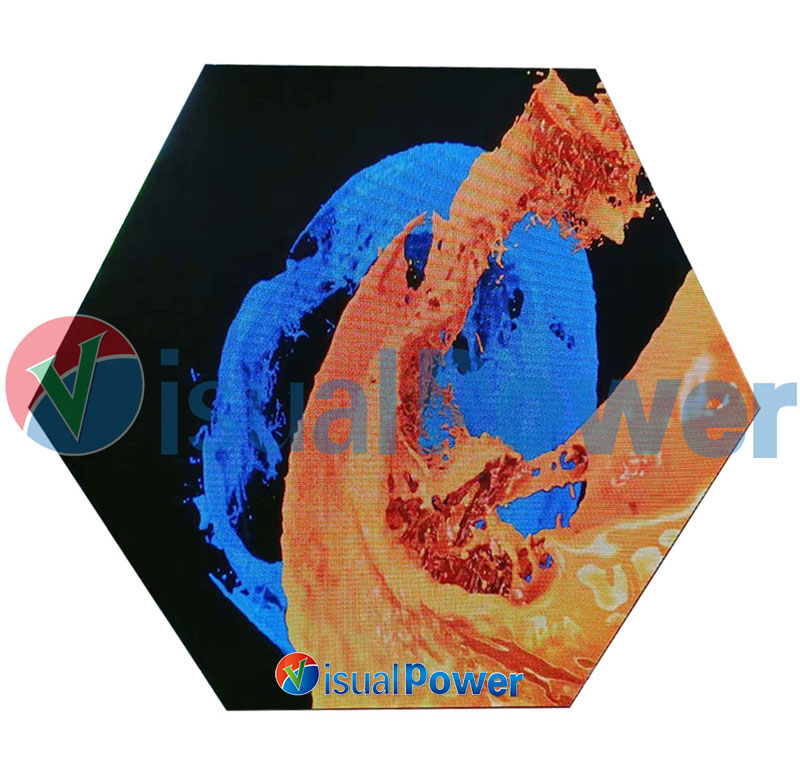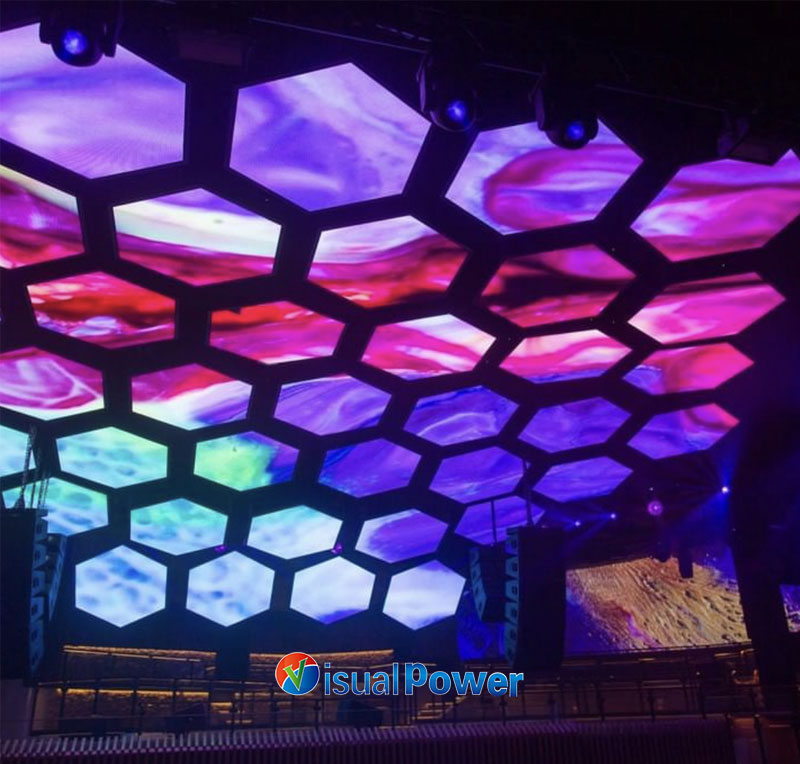категории
- Новости (81)
- тематическое исследование (6)
– My real confrontation with дисплей с шестигранной LED screens on the spot
I’m actually not an avant-garde designer, but I do have a bit of a “visual cleanliness obsession”. I can tell at a glance whether a space is seriously saying “its own words”. Так, when I first stood in front of that hexagonal LED installation in an exhibition area of an art and technology museum, I was stunned.
I’m wondering: Is this a display screen or part of the building? Or perhaps, is it simply the opening remarks of some kind of “spatial language”?

I’m engaged in spatial projects and deal with various walls, ceilings and display structures every day. Если быть честным, traditional rectangular screens have become hard to arouse any creative desire. Big, bright and clear have become the three-piece set that causes visual fatigue.
But the hexagon is different. It naturally possesses the beauty of “asymmetry”, being both orderly and slightly chaotic. When this geometric language is combined with LED modules, the tension is truly irresistible.
I remember in a visual gallery of a technology brand, we used seven groups of hexagonal LED modules, arranged in a circular and centripetal pattern to form a structure similar to a honeycomb. It’s not the kind of staged photos that look good, but rather the one that truly “pierces through” the visual center of the space. It is at that moment that you realize that “отображать” is not merely about playing videos; it is more like “sculpting information”.
When many customers hear me mention Hexagon LED Display, their first reaction is always: “Oh, is it made in the honeycomb type?” Every time I could only smile and say, “No, it’s made into grammar.”
What does it mean?
The traditional screen is like a period: it ends when you finish watching. Однако, the hexagonal LED splicing structure is open, and it itself can point to more possibilities. You can extend to the left, fold to the right, spread out in the corner, or climb up to the ceiling – you are not designing the content, but constructing the grammatical system.
Once we were working on a corporate culture museum, using hexagonal screens to create a “time travel tunnel”, with each screen representing a historical segment of a brand. When the audience moves through it, the screen will automatically start the content playback according to the position sensing. That immersive feeling of “stepping into memory” is something that a straight screen can never offer.

Although these hexagonal LED devices are shining brightly on the spot, the process of implementing the technology is actually a complete mess. Seam routing, module load, arc surface splicing, signal synchronization, ventilation and heat dissipation… Each one is a test.
Especially when you are doing large-scale splicing, you need to take into account the changes in the audience’s perspective, the unity of near and far vision, the color differences between modules, and the transition logic of content rendering… Один раз, I even argued with the technical team until three o ‘clock in the morning over a gap at a 90° corner.
But it was also on that occasion that I experienced for the first time what is called “true creativity”. It’s never about how stunning the idea is, but rather whether you can build the framework for it, lay the cables and draw the logic diagram well. Если быть честным, this process is a bit like building a “living machine”.
At first, I also thought that hexagonal leds might only be suitable for high-budget art galleries and technology exhibitions. Позже, I found out that it wasn’t.
Настоящее время, many brand window displays have begun to try to stack hexagonal screens with small modules to create a foreground structure. Some children’s education venues simply install the screens in the low areas that children can reach, and the content will respond according to the children’s touches. I even saw in the airport waiting hall an information island composed of hexagonal screen blocks, which carouted weather, boarding information and cultural short films. Surprisingly, it was very nice.
Its application logic is very simple: more flexible than rectangles, more stable than circles, and easier to control costs than irregular shapes – achieving a “non-coercive balance” between structural aesthetics and information expression.

You know, I’ve been in this industry for over a decade and have long been immune to “black technology”. What really moves me now is not how high the resolution is, nor whether it can be naked-eye 3D or not.
What I care about is whether this screen has “invited people in”.
Hexagon LED display is not merely “breaking the border”, but rather an invitation. It invites people to step into the content and also invites the space to express itself. Every time we use it to complete a project, I feel that I am no longer just a “content transporter”, but like a “structural choreographer”.
This might be what attracts me most about it.